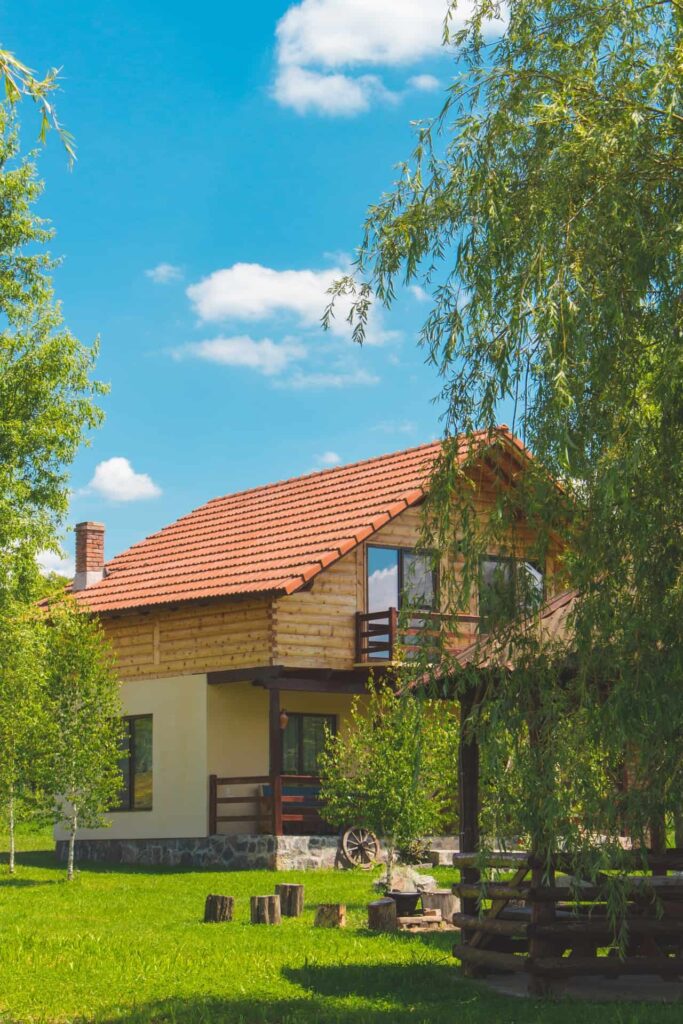Your Key to Tax-Advantaged Wealth!
Cost segregation is one of the largest and most underutilized tax loopholes available to buy and hold Real Estate investors!

About Redtec Solutions, LLC
Redtec Solutions, LLC is the premier residential cost segregation company in the SW United States that specializes in 1 to 4 unit rental properties.
What is Cost Segregation?
Cost Segregation is an advanced depreciation technique wealthy people use to leverage existing loopholes in the IRS tax code to maximize profit.
Testimonials
Our company’s success is defined by our repeat and referral business. We believe this is due to the tremendous tax savings that are created with a combination of cost segregation studies and proper tax planning.


Our Services
Redtec Solutions, LLC provides an affordable, comprehensive, highly-specialized service that can reduce a residential income-producing property investor’s tax burden and increase after-tax cash flow by thousands of dollars annually above and beyond traditional depreciation.
Upon completion of a cost segregation study, you will receive two downloadable reports. One is an itemized list of all personal property and land improvements in your investment property. The second is the finalized cost segregation report that should be turned over to your CPA. You will also have the ability to download representative pictures of your personal property/land improvements. Both reports and the pictures will be stored on redtecsolutions.com for 3 months. Alternatively, Redtec Solutions will store all reports for a client on redtecsolutions.com indefinitely for $50/yr. Please review the FAQ to learn more about residential cost segregation.
Maximizing the return on your residential rental property is EASY. Sophisticated investors agree that valuing personal property and land improvements separately is one of the best ways to boost the return on your investment. Start saving now, with 7 easy steps:
- Create an account profile on redtecsolutions.com.
- This will involve filling out a property-specific questionnaire and agreeing to our terms of use.
- Based on the property location, and when the report is needed, we will provide you with an estimated completion date.
- Arrangements are made with the owner, tenant, or property manager to gain access to the subject property to perform the cost segregation study.
- During the site visit, measurements, notes, and photos are collected.
- The data is then used to create your customized reports, which will be uploaded to our secure server upon completion.
- You will be notified via email of the completion of your reports and will be sent an invoice.
- Upon receipt of payment, you will have access to download your completed reports and photos from our secure server.
Frequently Asked Questions
General Cost Segregation Questions:
Cost segregation is an accelerated depreciation technique that sophisticated real estate investors use to reduce their tax burden and increase after-tax cash flow. Cost segregation is accomplished with a cost segregation study.
A cost segregation study is a comprehensive analysis whereby personal property assets and land improvement assets are identified and segregated from real property assets for tax reporting purposes. According to IRS Publication 946, “Appliances, carpets, furniture, etc., used in a residential rental real estate activity” can be classified as “5-year property” and depreciated using the “200% declining balance” method. In addition, “certain improvements made directly to land or added to it (such as shrubbery, fences, roads, and bridges)” can be classified as “15-year property” and be depreciated using the “150% declining balance” method. These 5 and 15 year asset class buckets result in accelerated depreciation, which reduces the investor’s tax burden and increases after-tax cash flow.
A cost segregation study provides:
- Increased cash flow through accelerated depreciation write-offs.
- An opportunity to claim “catch-up” depreciation on previously misclassified assets without having to amend a prior tax return.
- The potential for little to no recapture of the 5 and 15 year asset classes upon disposition (please consult your CPA).
- Information that is valuable in managing capitalized assets.
Yes. Please refer to IRS Publication 946 and the IRS Cost Segregation Study Audit Techniques Guide for more information.
Specific Cost Segregation Questions (relating to Redtec Solutions, LLC):
Cost segregation is an accelerated depreciation technique that sophisticated real estate investors use to reduce their tax burden and increase after-tax cash flow. Cost segregation is accomplished with a cost segregation study.
A cost segregation study is a comprehensive analysis whereby personal property assets and land improvement assets are identified and segregated from real property assets for tax reporting purposes. According to IRS Publication 946, “Appliances, carpets, furniture, etc., used in a residential rental real estate activity” can be classified as “5-year property” and depreciated using the “200% declining balance” method. In addition, “certain improvements made directly to land or added to it (such as shrubbery, fences, roads, and bridges)” can be classified as “15-year property” and be depreciated using the “150% declining balance” method. These 5 and 15 year asset class buckets result in accelerated depreciation, which reduces the investor’s tax burden and increases after-tax cash flow.
A cost segregation study provides:
- Increased cash flow through accelerated depreciation write-offs.
- An opportunity to claim “catch-up” depreciation on previously misclassified assets without having to amend a prior tax return.
- The potential for little to no recapture of the 5 and 15 year asset classes upon disposition (please consult your CPA).
- Information that is valuable in managing capitalized assets.
Yes. Please refer to IRS Publication 946 and the IRS Cost Segregation Study Audit Techniques Guide for more information.
Troubleshooting Questions:
Cost segregation is an accelerated depreciation technique that sophisticated real estate investors use to reduce their tax burden and increase after-tax cash flow. Cost segregation is accomplished with a cost segregation study.
A cost segregation study is a comprehensive analysis whereby personal property assets and land improvement assets are identified and segregated from real property assets for tax reporting purposes. According to IRS Publication 946, “Appliances, carpets, furniture, etc., used in a residential rental real estate activity” can be classified as “5-year property” and depreciated using the “200% declining balance” method. In addition, “certain improvements made directly to land or added to it (such as shrubbery, fences, roads, and bridges)” can be classified as “15-year property” and be depreciated using the “150% declining balance” method. These 5 and 15 year asset class buckets result in accelerated depreciation, which reduces the investor’s tax burden and increases after-tax cash flow.
A cost segregation study provides:
- Increased cash flow through accelerated depreciation write-offs.
- An opportunity to claim “catch-up” depreciation on previously misclassified assets without having to amend a prior tax return.
- The potential for little to no recapture of the 5 and 15 year asset classes upon disposition (please consult your CPA).
- Information that is valuable in managing capitalized assets.
Yes. Please refer to IRS Publication 946 and the IRS Cost Segregation Study Audit Techniques Guide for more information.
General Questions:
Cost segregation is an accelerated depreciation technique that sophisticated real estate investors use to reduce their tax burden and increase after-tax cash flow. Cost segregation is accomplished with a cost segregation study.
A cost segregation study is a comprehensive analysis whereby personal property assets and land improvement assets are identified and segregated from real property assets for tax reporting purposes. According to IRS Publication 946, “Appliances, carpets, furniture, etc., used in a residential rental real estate activity” can be classified as “5-year property” and depreciated using the “200% declining balance” method. In addition, “certain improvements made directly to land or added to it (such as shrubbery, fences, roads, and bridges)” can be classified as “15-year property” and be depreciated using the “150% declining balance” method. These 5 and 15 year asset class buckets result in accelerated depreciation, which reduces the investor’s tax burden and increases after-tax cash flow.
A cost segregation study provides:
- Increased cash flow through accelerated depreciation write-offs.
- An opportunity to claim “catch-up” depreciation on previously misclassified assets without having to amend a prior tax return.
- The potential for little to no recapture of the 5 and 15 year asset classes upon disposition (please consult your CPA).
- Information that is valuable in managing capitalized assets.
Yes. Please refer to IRS Publication 946 and the IRS Cost Segregation Study Audit Techniques Guide for more information.
Contact Us
Order-Related Questions
- Previously Placed Order
- Place a New Order
- Scheduling/Tenant Questions
- Billing/Payment-Related Questions
- Employment Opportunities
Don Curran
Technical Cost Segregation Questions
- Cost Segregation Theory
- Depreciation Schedules
- 1031 Exchanges
- Property Qualifications


